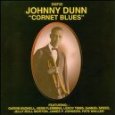
Daily Dose Of Jazz…
Johnny Dunn was born on February 19, 1897 in Memphis, Tennessee and learned to play trumpet as a youth. He attended Fisk University in Nashville and had a solo act in Memphis before he was discovered by W.C. Handy and traveling to New York with him in 1917. After a three-year association featured playing cornet, Johnny joined Mamie Smith’s Jazz Hounds, recording with her band before leaving a year later to lead his Original Jazz Hounds.
During the 1920s he ventured to Europe with the Will Vodery band, recorded with Noble Sissle in France, played and recorded with Willie “The Lion’ Smith and memorable sessions with Jelly Roll Morton in New York, had a hit song “Sergeant Dunn’s Bugle Call Blues”.
By the 30s Dunn was working steadily in Europe and often residing there for periods of time in the Netherlands. He was among the best of the musicians playing in the immediate pre-jazz years and he influenced many of his contemporaries. Overshadowed though he was by the arrival of Louis Armstrong, Dunn was still an able and gifted player, showing subtle power and using complex patterns that never descended into mere showmanship.
His stylistic roots became outmoded during the 30s but his decision to remain in Europe and his early death on August 20, 1937, in Paris, meant that his reputation never suffered and is recognized as having been a highly accomplished trumpeter.
More Posts: trumpet
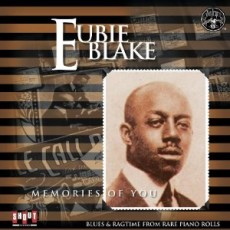
Daily Dose Of Jazz…
James Hubert Blake was born on February 7, 1887 in Baltimore, Maryland to former slaves and was the only surviving child of eight. Blake’s musical training began when he was just four or five years old when he wandered into a music store, climbed on the bench of an organ, and started “fooling’” around. The store manager recognized his genius, told his mother and subsequently bought an organ.
At seven, he received music lessons from the Methodist church organist, by fifteen he played piano at Aggie Shelton’s Baltimore bordello and got his first big break in the music business when world champion boxer Joe Gans hired him to play the piano at Gans’ Goldfield Hotel, the first “black and tan club” in Baltimore in 1907. In 1912, Blake began playing ragtime in vaudeville with James Reese Europe’s “Society Orchestra” which accompanied Vernon and Irene Castle’s ballroom dance act. Shortly after World War I, Blake joined forces with performer Noble Sissle forming the vaudeville music duo, the “Dixie Duo” that transformed into 1921’s “Shuffle Along”, the first hit musical on Broadway written by and about African-Americans.
Throughout his career Blake made three films with Sissle for Lee DeForest’s Phonofilm Sound-On-Film, later played the Boathouse nightclub in Atlantic City, was bandleader with the USO during World War II, with his career winding down in 1946 enrolled and graduated from New York University, revived in 1950 with new interest in ragtime as artist, historian and educator, received the Presidential Medal of Freedom from President Reagan, awarded numerous honorary doctorates and had another hit Broadway play “Eubie!” in his honor. Eubie Blake continued to play piano and record until his death on February 12, 1983 in Brooklyn, New York. He was 96.
More Posts: piano
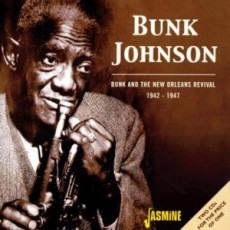
Daily Dose Of Jazz…
Willie Gary “Bunk” Johnson was born December 27, 1879 although there is some speculation surrounding his birth year as 1889. He received lessons from Adam Olivier, began playing professionally in Olivier’s orchestra and spent some adolescent years occasionally playing with Buddy Bolden’s band.
During the decade 1905-1915 Bunk was regarded as one of the top trumpeters in New Orleans in between repeatedly leaving to tour with minstrel shows and circus bands. In 1931 he lost his trumpet and front teeth when a violent fight broke out at a dance that put an end to his playing. He thereafter worked in manual labor, occasionally giving music lessons on the side when he could.
The later years of the thirties saw writers researching jazz history and trading letters with Johnson in which he stated he could play again if he had new teeth and trumpet. Writers and musicians took up a subsequent collection and got his new dentures via Sidney Bechet’s dentist brother, a new horn and made his first recording in 1942.
This propelled Bunk into public attention, attracting a cult following and he played New Orleans, San Francisco, Boston and New York City. His work in the 1940s show why he was well regarded by his fellow musicians—on his best days playing with great imagination, subtlety and beauty. Earlier fame eluded him for he was unpredictable, temperamental, with a passive-aggressive streak and a fondness for drinking alcohol to the point of serious impairment. In 1948, jazz trumpeter Bunk Johnson suffered from a stroke and died the following year in New Iberia on July 7, 1949.
More Posts: trumpet
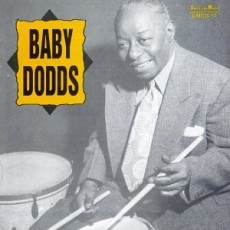
Daily Dose Of Jazz…
Warren “Baby” Dodds (pronounced “dots”) was born on December 24, 1898 in New Orleans, Louisiana. He was the younger brother of clarinetist Johnny Dodds and is regarded as one of the very best jazz drummers of the pre-big band era, and one of the most important early jazz drummers. Some of his early influences include Louis Cottrell, Harry Zeno, Henry Martin, and Tubby Hall.
Dodds gained reputation as a top young drummer in New Orleans, and worked on Mississippi River steamship bands with young Louis Armstrong. In 1921 moved to California to work with Joe “King” Oliver, and followed Oliver to Chicago, which would be his base of operations.
Dodds recorded with Louis Armstrong, Jelly Roll Morton, Art Hodes, his brother Johnny Dodds and by the late 1940s he worked at Jimmy Ryan’s in New York City. He also worked with Bunk Johnson when he would return to New Orleans. After suffering three strokes in 1949 and 1950, Dodds tutored and played in public irregularly, though he was unable to complete entire performances. In 1954 he played for a Natty Dominique recording session that featured bassist Israel Crosby and pianist Lil Hardin Armstrong.
Dodds was among the first drummers who improvised while performing to be recorded. He varied his drum patterns with accents and flourishes, and he generally kept the beat with the bass drum while playing buzz rolls on the snare. This play would be a long roll that lasted till the following beat, which created a smoother time feel that he later developed into the jazz ride pattern most commonly used ever since. He continues to be admired for the creativity of his playing and he believed in playing something different for every chorus of every tune. Additionally Dodds is perhaps the first jazz drummer to record unaccompanied: in 1945 he recorded two solos for Circle Records, and the next year recorded a series of solos and reminiscences for Folkways Records. Baby Dodds, jazz and Dixieland drummer passed away on February 14, 1959.
More Posts: drums
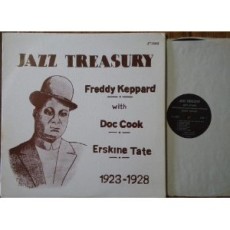
Daily Dose Of Jazz…
Erskine Tate born on December 19, 1895 in Memphis, Tennessee played violin and studied music at Lane College in Jackson, Tennessee. He moved to Chicago in 1912, studied at the American Conservatory and took his first professional gig at 17. By 1918 he was an early figure in the jazz scene and leading his band the Vendome Orchestra providing music during intermission and for the silent films that were shown in the Vendome Theatre at 31st and State streets.
The band was originally a nine-piece outfit but by the mid 20s had grown to 15. Among the members were Louis Armstrong, Freddie Keppard, Stomp Evans, Buster Bailey, Fats Waller and Teddy Wilson. They recorded during the period for Okeh and Vocalion Record labels.
By 1928 Erskine left the orchestra and led a band at the Metropolitan Theatre and then the Michigan Theatre. He had a long residency at the Cotton Club and continued to lead orchestras and play for dance marathons throughout the 1930s. In 1945 he retired from active performance, opened his own studio, began teaching music and became one of the city’s top instructors throughout the 50s and 60s.
Violinist, composer, conductor and bandleader Erskine Tate passed away on December 17, 1975 in Chicago, Illinois.
More Posts: bandleader,composer,conductor,violin

